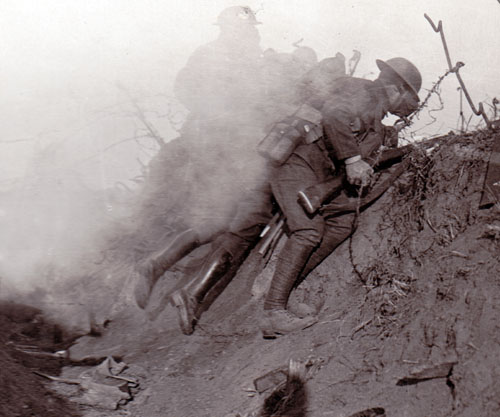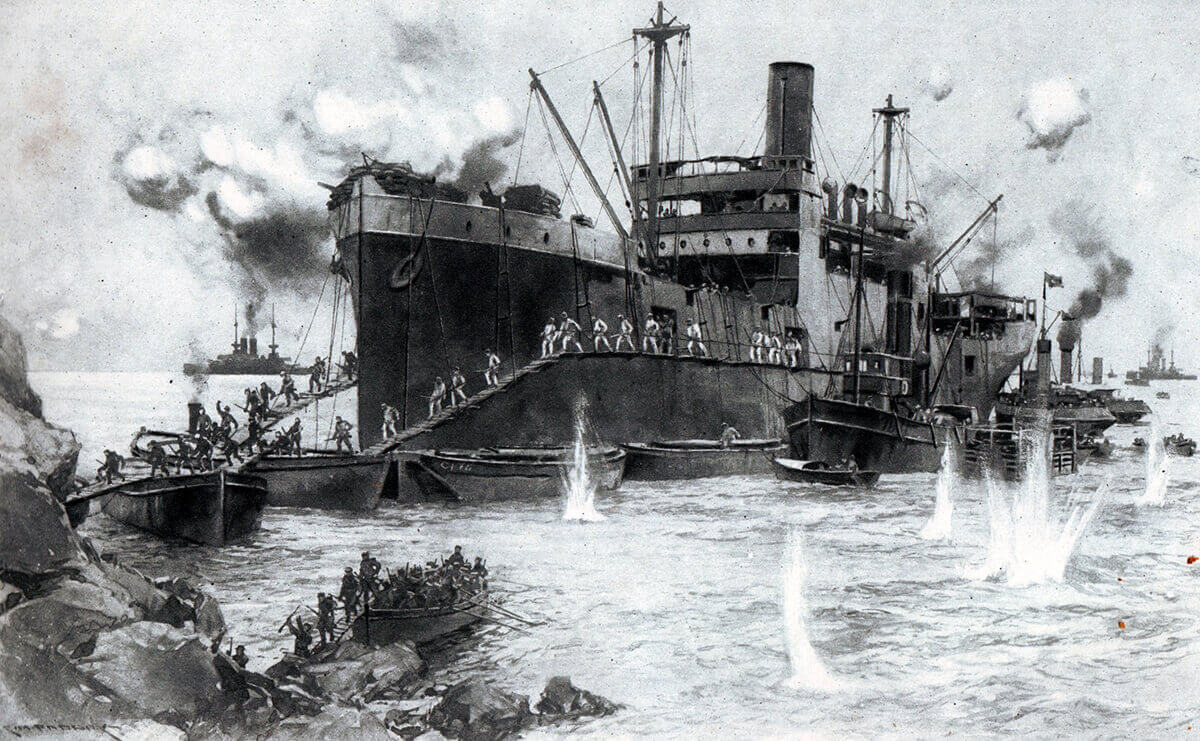Europe was unprepared for what was to come in September 1939. Wags called the eight months ending in May 1940 the ‘Phoney War”. The “Sitzkreig”. The outbreak of the “Great War” was different in August 1914, as war exploded across the European landmass. France alone suffered 140,000 casualties over the four-day “Battle of the Frontiers”, where the River Sambre met the Meuse. 27,000 Frenchmen died in a single day, August 22, in the forests of the Ardennes and Charleroi.
The British Expeditionary Force escaped annihilation on August 22-23 only by the intervention of mythic angels, at a place called Mons. In the East, a Russian army under General Alexander Samsonov was encircled and so thoroughly shattered at Tannenberg, that German machine gunners were driven to insanity over the damage inflicted by their own guns, on the milling and helpless masses of Russian soldiers. Only 10,000 of the original 150,000 escaped death, destruction or capture. Samsonov himself walked into the woods, and shot himself.
The “Race to the Sea” of mid-September to late October was more a series of leapfrog movements and running combat, in which the adversaries tried to outflank one another. It would be some of the last major movement of the Great War.
A million men were transported by all sides to the ancient textile town of Ypres, “Leper” to the Dutch and “Wipers” to the Tommies, for the purpose of killing each other.

75,000 men from all sides lost their lives in the month-long apocalypse at Ypres while, all along a 450-mile front, millions of soldiers dug into the ground to shelter from what Private Ernst Jünger later called the “Storm of Steel”.
With stalemate on the western front in early 1915, Allied powers considered opening an offensive in another theater. The Ottoman Empire had entered the war on the side of the Central powers by this time, against whom Russia’s Grand Duke Nicholas was asking for help in the Caucasus. A Naval expedition was decided upon to seize the Dardanelles, the narrow strait connecting the Aegean with the Sea of Marmara and taking Turkey out of the war.
Despite misgivings, naval bombardment opened on the Dardanelles on February 19, 1915. A month of French and British shelling failed to force the straits and Allied planners fell back on amphibious invasion. The table was set for the eight month disaster known as the battle of Gallipoli.
489,000 French and Commonwealth troops were fed into the abyss, including some sixty five thousand Australians and New Zealand forces collectively known as the Australian and New Zealand Army Corps. or ANZACs.
Following four months training in Egypt, the fledgling ANZAC forces came ashore on this day in 1915, under heavy Turkish fire. Commonwealth forces fought heroically, thousands of individual stories including the famous “Six Before Breakfast”, pre-dawn actions leading to as many Victoria Crosses. Despite all of it, the landing was a fiasco, stranding thousands of men, vehicles and vast quantities of stores on the beach.

The traffic jam, was horrendous. With the water behind them red with blood, ANZAC forces attempted to force the high ground despite determined fire from Turkish forces under Mustafa (Atatürk) Kemal.
A bold strike designed to knock the Ottomans out of the war became a stalemate, the blood soaked campaign dragging on for eight months.

By the end of 1915, Commonwealth forces suffered some 302,000 casualties. While the Gallipoli campaign made little difference in the course of the war, the actions of the ANZACs left a powerful legacy. In time, this date became that rarest of days, a solemn day of remembrance shared by two sovereign nations, a part of the national identity of both countries.
With the beginning of WWII, ANZAC Day became a day to commemorate the lives of Australians and New Zealanders lost in all wars, the meaning of the date broadened to include those killed in all military operations in which the two nations have been involved.

ANZAC Day was first commemorated at the Australian War Memorial in 1942 but, due to government orders preventing large public gatherings in case of Japanese air attack, this was a small affair with neither march nor memorial service.
For the wounded, the dead and the maimed of that day one hundred four years ago today, ANZAC Day remains an occasion for solemn remembrance, from that day to this.



A very interesting and moving post. May we never forget the disaster that was Gallipoli.
LikeLike
Reblogged this on Dave Loves History.
LikeLiked by 1 person
An interesting piece of military history, but it was very foolish to attack the sheer cliffs of Gallipoli. An attack on the Turks should have come by land from the west, as had happened in the past, but perhaps the Greeks, denying military access to their territory, precipitated this stupidity. Fortunately for Hitler, in WW2, some of the WW1 donkeys were still in charge in 1940. Gallipoli was suicidal, but, no worry, it was mostly colonials that got their heads blown off.
LikeLiked by 1 person
The whole thing was Churchill’s brainchild. It almost ruined him at the time.
LikeLike
May we always remember!

LikeLiked by 1 person
Is seems the Aussies and the Kiwis do a better job remembering their history, than we do ours.
LikeLiked by 1 person
It certainly does and what does that say about how we raise our children?
LikeLiked by 1 person
Let it be noted for the record, my kids could hold up their end of a conversation about the Schlieffen Plan. 😎
LikeLiked by 1 person
I sincerely did not mean that to reference yourself!! I just keep hearing so much about how little history is taught in the school systems today, it breaks my heart.
LikeLiked by 1 person
Amen to that, my friend.
LikeLiked by 1 person